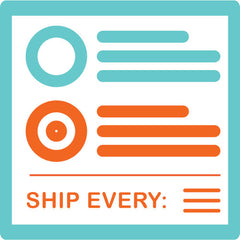The One Small Change That Can Help You Finally Reach Your Goals
Reading Time: 4 minutes
___
Summary:
-
One small mindset shift can help you finally reach your goals
-
Mental contrasting links your dreams to real-world action
-
Identify internal obstacles, then create one simple plan
-
Proven to improve outcomes in health, work, and relationships
-
Turns vague intentions into specific, doable steps every day
___
We often set big goals. We imagine ourselves being healthier, more successful, or in stronger relationships. But most of the time, something holds us back; we don’t quite reach our intended destination.

What do you do in these moments? Do you find yourself visualizing more? Maybe you put in more effort, but you still don’t arrive at your goal. The good news is that you can overcome this obstacle and connect your hopes to your reality, not by visualizing more or doing more, but by practicing mental contrasting.
What is mental contrasting?
Mental contrasting is a self-regulation method where individuals first imagine their desired future, then compare it with their current reality, highlighting the obstacles involved.
This process helps people strengthen their commitment to goals and create specific strategies to overcome challenges, making it a valuable approach for reaching personal and professional ambitions.
How it works
Start with your goal
First, ask yourself: What do I genuinely wish for? It could be, for example, “I want to run again with my prosthetic leg,” or “I want to advocate for myself at work.”
Visualize the outcome
Then imagine the very best outcome of achieving it: how you’d feel, who you’d be with, and what you’d experience. This step isn’t optional; it fuels motivation.
Face your internal obstacle
Here’s the reality: the biggest obstacle isn’t always external—it’s internal. Consider the mental block or behavior that prevents progress. It could be “I don’t have time,” “I’ll wait until everything is perfect,” or “I’m worried about being judged.” Recognizing this honestly is essential.
Make a simple plan—one actionable step
Once you’ve identified your obstacle, pivot to the “plan” phase. Ask yourself: What one thing will I do, when and where, to overcome the obstacle? For example: “Every morning, after my morning coffee, I’ll work on my strength by doing a few exercises.” By identifying one actionable step and keeping it simple, you create momentum.
GOAL > OUTCOME > OBSTACLE > PLAN
Why this small change works
This approach, which involves identifying the goal and outcome, then identifying the obstacle, and finally taking one actionable step, is more effective than visualizing alone or even positive thinking. It connects your dream to the real conditions inside and outside you. This way, you’re not just fantasizing; you’re preparing. You’re aligning your mindset with your context.
Studies show that people who apply this method become measurably better at achieving goals like quitting smoking, improving grades, and maintaining healthier relationships.
How to use mental contrasting in your own life
-
Choose one meaningful goal you care about
-
Visualize the outcome vividly
-
Ask what’s holding you back, especially inside
-
Come up with a simple plan for a specific moment: when and where
-
Write it down, revisit it, and adjust as needed
Although it may sometimes seem like the best course of action is simply to act, planning and mental contrasting are crucial to your success, as they align your mind and environment.
The bottom line
In a world of constant distractions and shifting priorities, it’s easy to drift rather than direct. This method provides a light yet potent anchor. It helps you engage with what truly matters and lets you act with full energy instead of vague intention.
If you’re stuck in “I wish I could” rather than “I am doing,” try the simple shift: identify the obstacle, then plan the small step. This small change could unlock what’s holding you back.
Related Reading:
Running Biomechanics and Form: A Beginner’s Guide to Amputee Running









































































